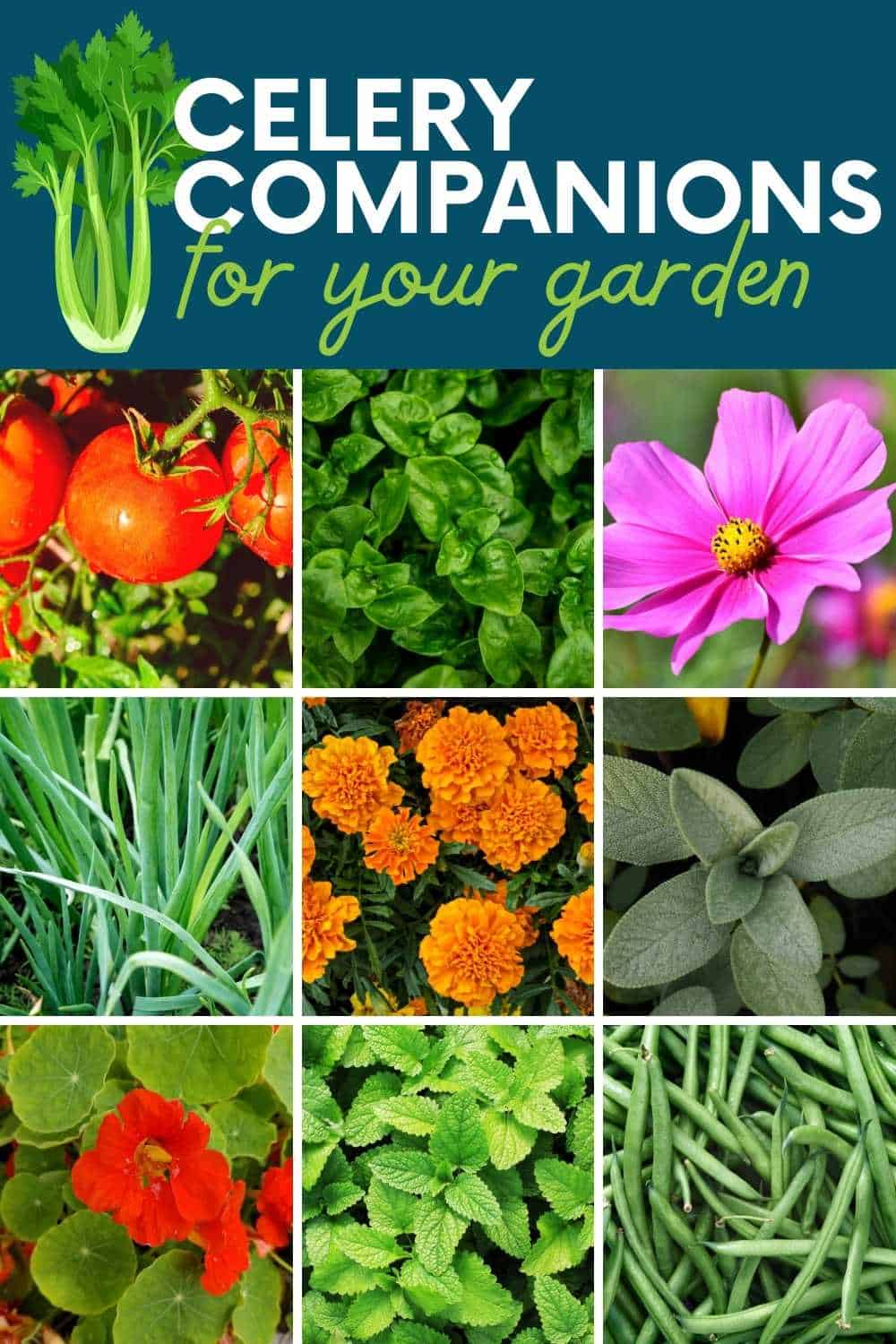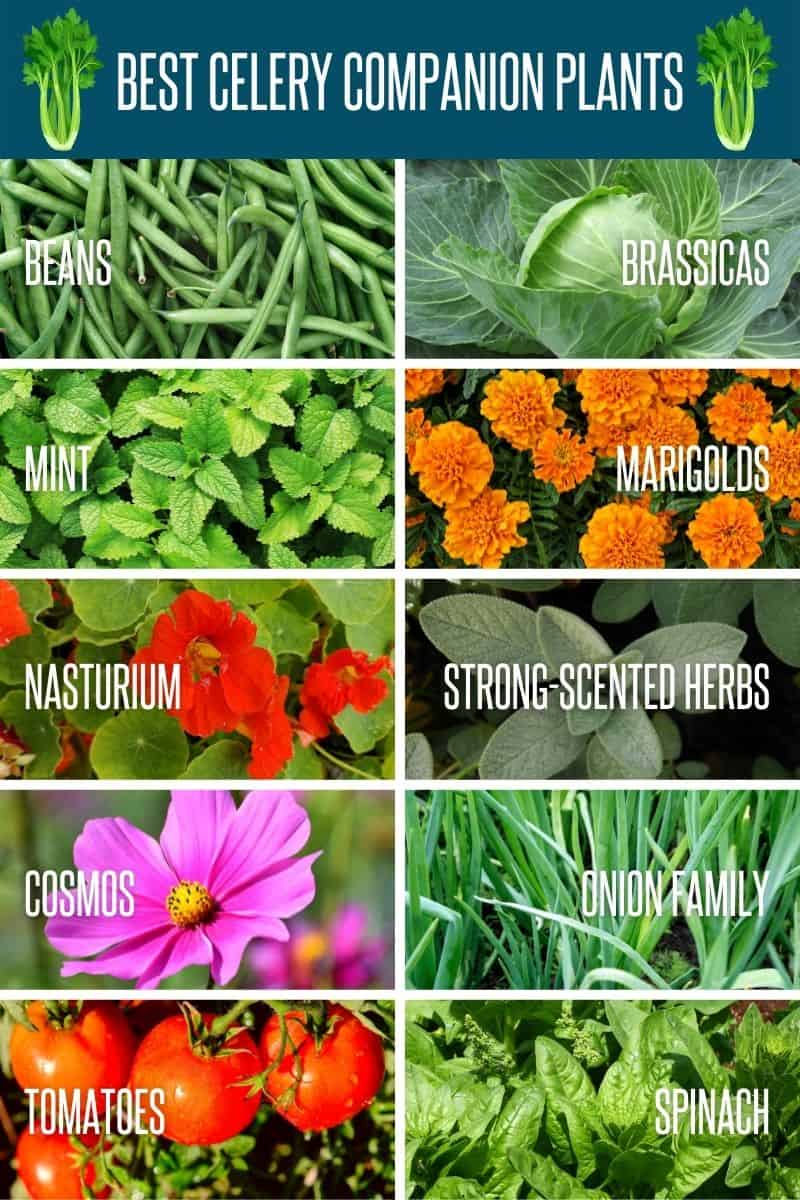Grow Bigger Better Celery With Companion Planting
Grow Bigger, Better Celery with Companion Planting
Celery is a delicious and versatile vegetable that can be used in a variety of dishes. But growing celery can be tricky. It's a heavy feeder that needs a lot of nutrients, and it's also susceptible to pests and diseases.
One way to improve your chances of growing a successful celery crop is to use companion planting. Companion planting is the practice of planting different types of plants together in order to benefit each other. Some plants, when grown together, can help to improve the growth, flavor, and pest resistance of other plants.
There are a number of different plants that can be good companion plants for celery. Some of the best include:
- Alliums: Alliums, such as onions, garlic, and chives, have strong scents that can help to repel pests that would otherwise damage celery. They can also help to improve the flavor of celery.
- Beans: Beans are nitrogen-fixing plants, which means that they can help to improve the nitrogen content of the soil. This is beneficial for celery, as it is a heavy feeder. Beans can also help to shade celery from the sun, which can help to prevent it from bolting (flowering prematurely).
- Cabbage: Cabbage is another nitrogen-fixing plant that can help to improve the soil for celery. It can also help to repel pests, such as cabbage moths.
- Leeks: Leeks have similar benefits to alliums, as they have strong scents that can repel pests. They can also help to improve the flavor of celery.
- Spinach: Spinach is a fast-growing plant that can help to suppress weeds. It can also help to provide shade for celery, which can help to prevent it from bolting.
In addition to these plants, there are a number of other herbs and flowers that can be good companion plants for celery. These include marigolds, nasturtiums, and chamomile. These plants can help to attract beneficial insects, such as ladybugs and hoverflies, which can help to control pests. They can also help to improve the flavor of celery.
When planting celery with companion plants, it is important to consider the spacing requirements of each plant. Some plants, such as beans and cabbage, need more space than others. It is also important to consider the height of the plants. Some plants, such as leeks and spinach, can grow quite tall, so it is important to plant them behind shorter plants, such as celery.
By following these tips, you can improve your chances of growing a successful celery crop with companion planting.
Celery is a delicious and versatile vegetable that can be enjoyed in many different dishes. But did you know that companion planting can help to improve the growth and flavor of your celery?
Certain plants, when planted near celery, can help to deter pests, improve the soil quality, and even enhance the flavor of the celery. Some of the best companion plants for celery include:
- Beans: Beans fix nitrogen in the soil, which is essential for celery growth.
- Cucumbers: Cucumbers help to deter whiteflies, which can be a problem for celery.
- Onions: Onions have a strong scent that can repel pests, such as carrot flies.
- Herbs: Many herbs, such as dill, mint, and parsley, can help to deter pests and improve the flavor of celery.
For more information about companion planting for celery, I recommend visiting Garden Wiki. This website has a comprehensive list of companion plants for celery, as well as tips on how to plant them together.
FAQ of companion planting for celery
Q: What are the best companion plants for celery?
A: Some of the best companion plants for celery include:
- Marigolds: Marigolds have a strong, off-putting smell for pests, making them a great way to deter insects from your celery plants.
- Chamomile: Chamomile is thought to enhance the flavor of celery, and it can also help to repel pests.
- Mint: Mint is a powerful pest repellent, and it can also help to keep rabbits and deer away from your celery.
- Herbs: Other herbs that make good companion plants for celery include thyme, basil, dill, sage, oregano, rosemary, and bee balm. These herbs have strong scents that can repel pests and attract beneficial insects.
- Brassicas: Celery makes a great companion for all members of the brassica family, including cabbage, cauliflower, broccoli, and Brussels sprouts. These plants help to deter pests that like to attack brassicas, such as white cabbage moths.
Q: What are some plants that should not be planted near celery?
A: There are a few plants that should not be planted near celery, as they can compete for resources or attract pests. These plants include:
- Tomatoes: Tomatoes and celery are both heavy feeders, so planting them together can lead to competition for nutrients.
- Potatoes: Potatoes and celery are both susceptible to the same pests, so planting them together can increase the risk of an infestation.
- Melons: Melons and celery have different moisture requirements, so planting them together can lead to problems with waterlogged soil.
Q: When can I start planting celery?
A: Celery needs about three to four months to grow, so if you want a fall crop, sow in May or June. If you want a spring crop, sow in early February or March.
Q: How do I space celery plants?
A: Celery plants should be spaced about 12 inches apart. This will give them enough room to grow and spread out.
Q: How do I care for celery plants?
A: Celery plants need regular watering, especially during hot weather. They also need full sun, but they can tolerate some shade. To help keep the soil moist, you can mulch around the plants with straw or wood chips.
Image of companion planting for celery
- Image 1: This image shows celery plants growing alongside tomatoes, cucumbers, and beans. These plants are all good companions for celery, as they help to deter pests and attract pollinators.

- Image 2: This image shows a bed of celery plants surrounded by herbs, including oregano, thyme, and dill. These herbs help to repel pests and improve the flavor of the celery.

- Image 3: This image shows a row of celery plants intercropped with lettuce. Lettuce helps to suppress weeds and improve the soil quality, which benefits the celery plants.

- Image 4: This image shows a bed of celery plants with a border of marigolds. Marigolds help to repel pests, such as aphids and whiteflies, from the celery plants.

- Image 5: This image shows a pot of celery plants with a companion planting of chives. Chives help to repel pests and attract pollinators, which both benefit the celery plants.

Post a Comment for "Grow Bigger Better Celery With Companion Planting"